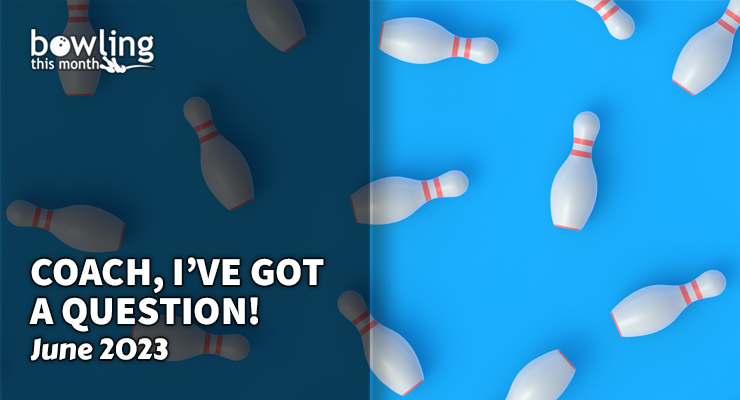Article Contents
- 1. I have both asymmetrical and symmetrical bowling balls, with solid, hybrid, and pearl...
- 1.1. The oil pattern
- 1.2. Oil viscosity
- 1.3. Lane friction and topography
- 1.4. Putting it together
- 2. I’m an older stroker with ball speed now of about 12 mph. I get to the pocket fairly...
- 2.1. Don’t go for pearlized balls
- 2.2. Look for lower differential equipment
- 2.3. Stay away from pin-up layouts
- 2.4. What are my options?
Note: This article is only available to Bowling This Month subscribers.
In this recurring feature, I answer questions from Bowling This Month readers. If you have questions, please leave them in the comment section below so I can address them in a future installment of Coach, I’ve Got a Question!
I have both asymmetrical and symmetrical bowling balls, with solid, hybrid, and pearl coverstock. I do prefer symmetrical cores, but is there any general guideline on what lane conditions a certain core is beneficial?
This is a topic that is very easy to either oversimplify or overcomplicate, so I will try to find a sweet spot in my answer. First, it sounds like there is a good variety in this bag and a clear preference for symmetrical cores, which shows a pretty good understanding of your own game. The first step for most bowlers once they’ve progressed to multiple bowling balls is to identify the kinds of balls they tend to match up with, and then find variations in the surface preparation and layouts to create variety. You also want to add in a few complementary pieces to use when that preference isn’t quite working out.
For example, I’ve always been a fan of low RG, high differential symmetrical balls, and some variation of those has formed the basis of my bag for a long time. Paired with a couple of other core/cover options, I can cover a wide range of conditions comfortably.
All this being said, the question of which lane conditions seem to match up to certain core types is a tricky one. When most ...
Already a premium member? Click here to log in.


 (Only
(Only 